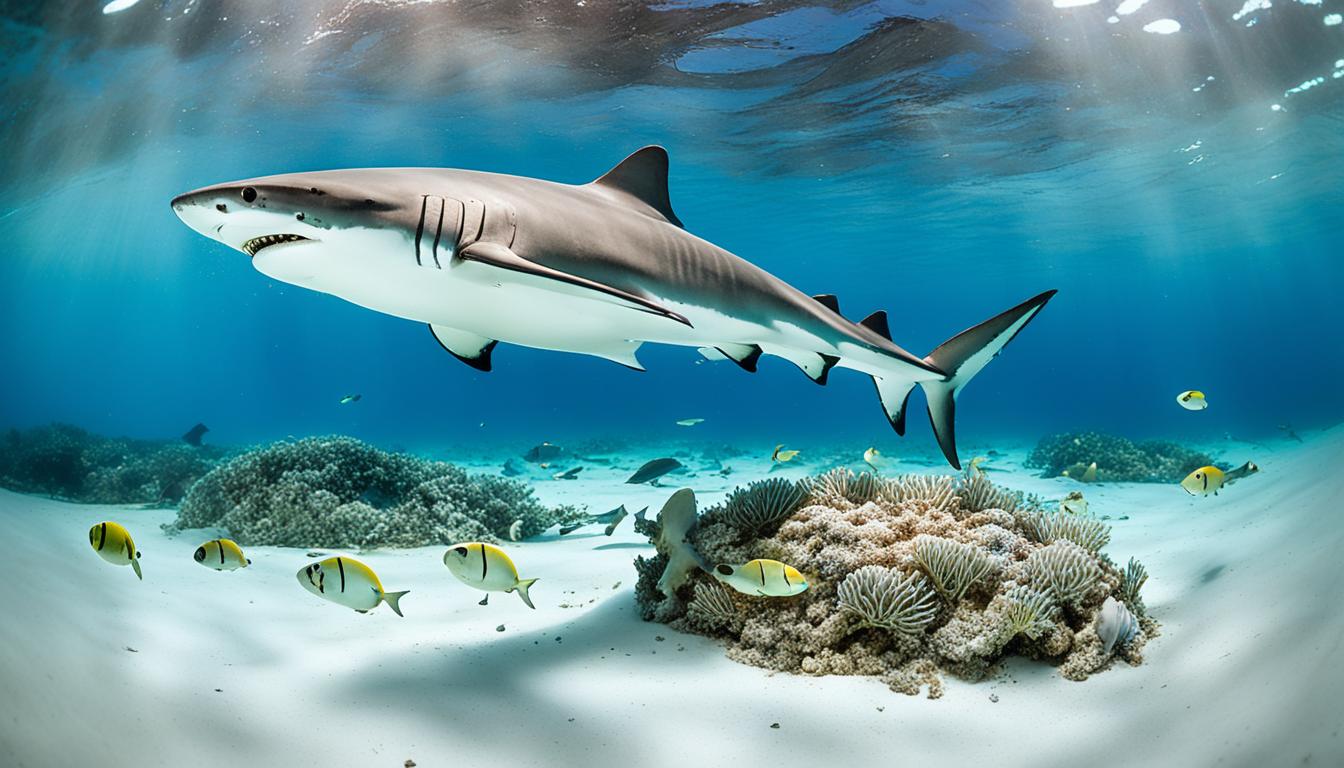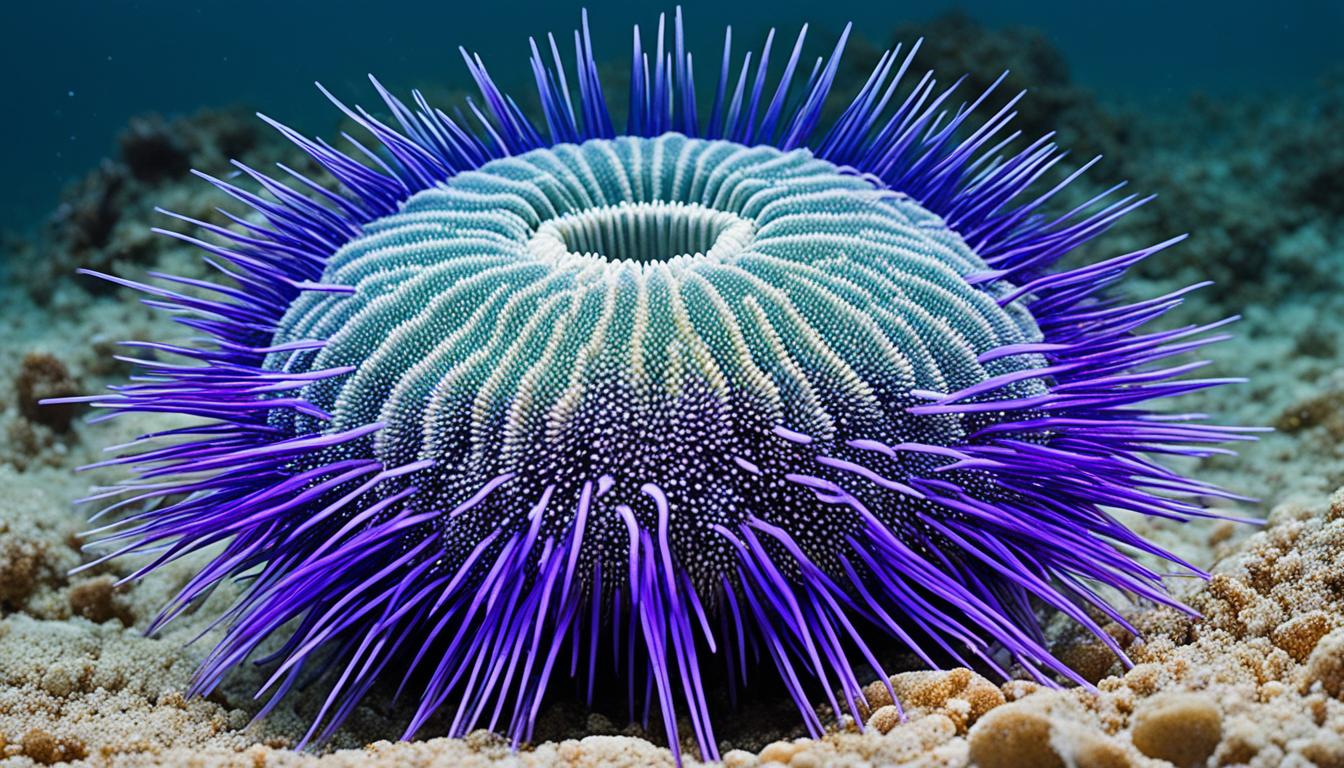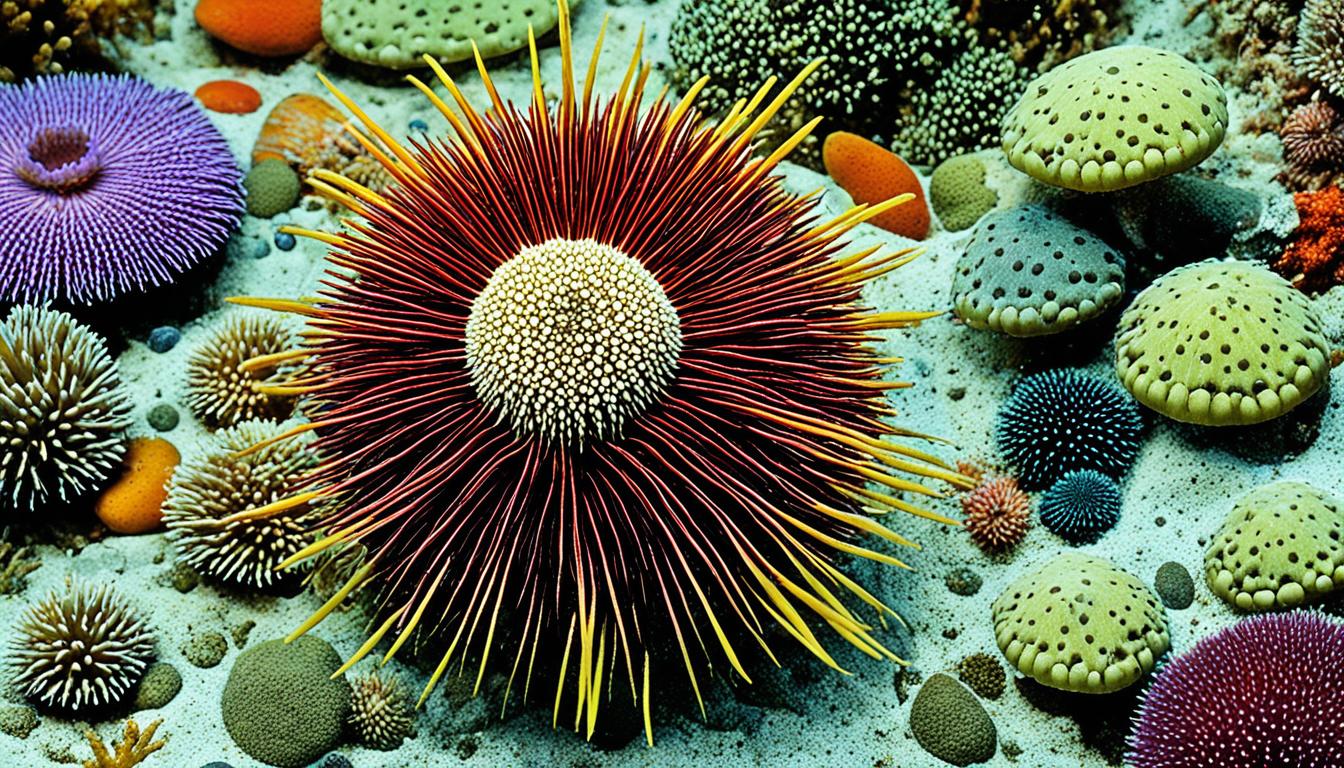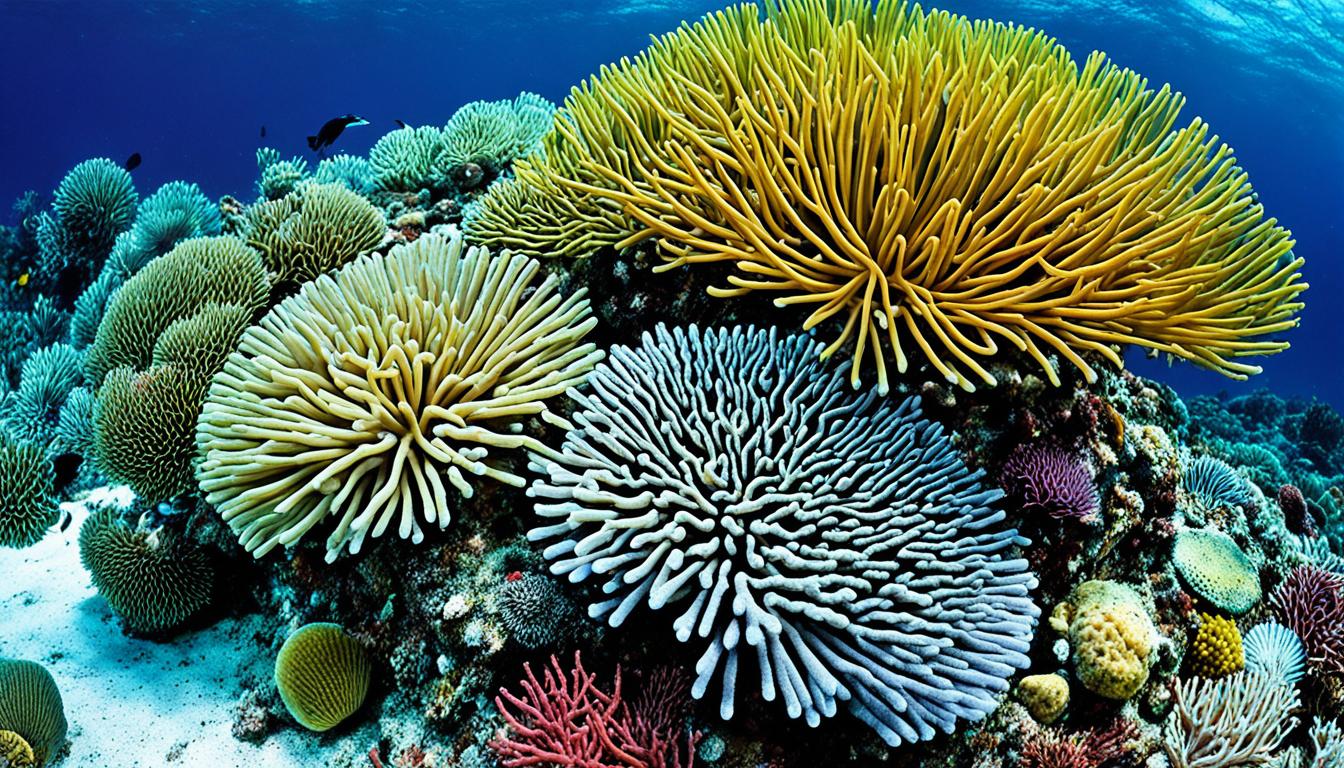Learning about shark reproduction helps us understand their important role in the ocean. Sharks have breeding habits that are quite unique. They put a lot of effort into making a few, well-developed babies. This is unlike many fish that lay thousands of eggs.
Sharks focus on a few offspring, which increases their chances of survival. In this article, we’ll dive into the details of shark reproduction. We’ll look at mating, gestation, and the amazing ways sharks reproduce.
Understanding Shark Reproductive Strategies
Sharks have amazing ways to reproduce that help them survive in the ocean. These methods match their shark reproductive anatomy and fall into three main types: oviparity, viviparity, and ovoviviparity. Each type shows how sharks adapt to different environments.
Oviparous sharks lay eggs in special cases called egg cases. These eggs develop outside their bodies. Viviparous sharks give birth to live young, which are fed inside the mother. Ovoviviparous sharks hatch their eggs inside but give birth to live young.
Knowing how sharks reproduce is key to saving these species. The way sharks have babies affects their numbers and the ocean’s health. Looking into their reproductive ways shows how complex and adaptable sharks are.
| Reproductive Method | Description | Examples of Species |
|---|---|---|
| Oviparity | Egg-laying with external incubation | Horn Shark, Skates |
| Viviparity | Live birth with internal nourishment | Great White Shark, Hammerhead Shark |
| Ovoviviparity | Eggs hatch inside the mother’s body | Tiger Shark, Bull Shark |
The Three Main Methods of Shark Reproduction
Sharks have three main ways to reproduce, each suited for their environment and lifestyle. These methods help us understand shark biology and how their young grow. They include oviparity, viviparity, and ovoviviparity, each vital for the survival of different species.
Oviparity (Egg-Laying)
Oviparous sharks lay eggs in a protective pouch called a “mermaid’s purse.” This pouch keeps the eggs safe as they attach to reefs or seaweed. The eggs take 6 to 9 months to develop, giving them a secure place to grow.
Species like catsharks and zebra sharks have evolved to protect their eggs better. This helps increase the chances of their eggs surviving.
Viviparity (Live Birth)
Sharks that give birth to live young have a unique method. They nourish their pups with a placenta, similar to mammals. Bull and hammerhead sharks are examples of this, which helps their young survive longer.
This method protects the pups inside the mother’s body. It ensures they develop safely before being born.
Ovoviviparity (Eggs Hatch Inside the Body)
Ovoviviparous sharks keep their eggs inside their bodies until they hatch. This protects them from predators, like in great white and cookiecutter sharks. During development, some sharks eat their siblings, ensuring only the strongest survive.
How do sharks reproduce?
Sharks have different ways of reproducing, each with its own benefits. These methods help them survive in various environments. For example, some sharks choose to have their young develop inside them to protect them from predators.
Different Species, Different Methods
Sharks have unique ways of making babies, depending on their needs. They use three main methods: oviparity, viviparity, and ovoviviparity. Each method is best for different situations.
- Oviparous sharks lay eggs that develop on their own.
- Viviparous sharks have live births, giving birth to fully developed young.
- Ovoviviparous sharks keep eggs inside until they hatch, helping their babies survive.
These differences show how sharks adapt to their environments. Things like water temperature and the presence of predators affect their reproduction.
Role of Environmental Factors in Reproduction
Environmental factors are key to sharks’ success in making babies. Things like water temperature, depth, and predators change their breeding habits. Sharks often go to safe areas, called nurseries, to have their babies or lay eggs. These places help the young sharks survive better.
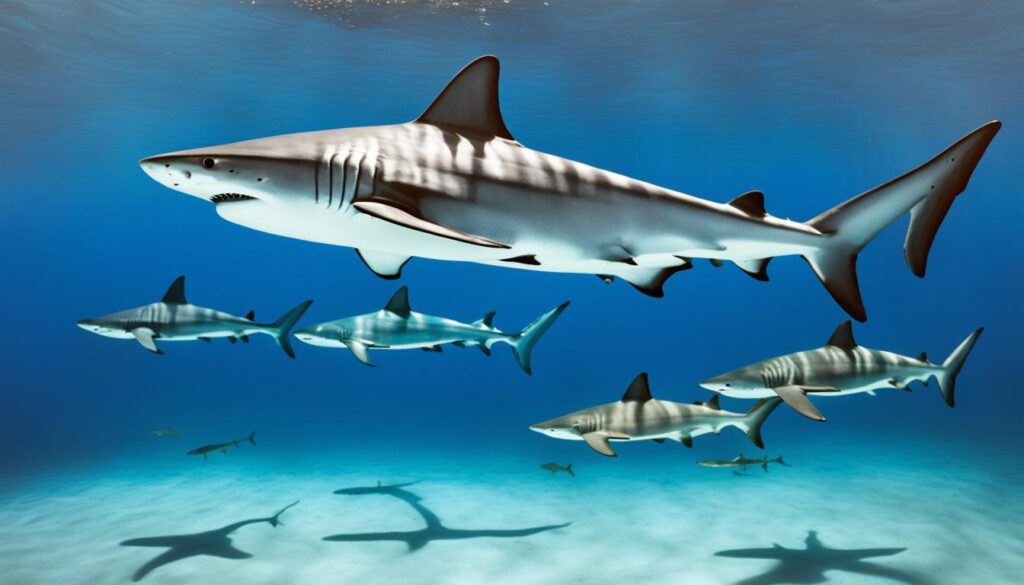
| Reproductive Method | Description | Advantages |
|---|---|---|
| Oviparity | Egg-laying species | Greater dispersal of offspring |
| Viviparity | Live-born offspring | Higher survival rate of young |
| Ovoviviparity | Eggs hatch inside the mother | Increased protection from predators |
Shark Mating Behavior: The Courtship Rituals
Sharks have complex courtship rituals that vary by species. These rituals include behaviors like biting or chasing. These actions show off their strength. They help decide who will mate and the health of their babies.
Behavior Patterns in Mating
Each shark species has its own mating behaviors. Some common actions are:
- Biting: Males bite females to start mating.
- Chasing: Males chase females to show they’re interested.
- Display of Strength: They show off their strength to stand out.
These rituals help sharks communicate and choose the best mate.
Male Competition for Females
Competition among males is key in shark mating. Males fight to be the top choice for females. This can lead to:
- Physical Combat: Males fight to prove they’re the best.
- Aggressive Displays: They show off to scare off rivals.
- Territorial Marking: They mark areas to show they’re ready to mate.
These competitions can impact the genetic health and survival of shark populations.
Shark Gestation Period and Reproductive Cycle
Learning about shark gestation is key to understanding how they reproduce. The time it takes for sharks to carry their young varies a lot, from 9 to 12 months. The greeneye dogfish takes a whopping 31 months to gestate, showing how different sharks have unique ways to survive.
Variations in Gestation Across Species
Every shark species has its own way of reproducing, which affects how long they carry their young. Some sharks breed every year, while others do it every few years. This flexibility helps them survive in changing ocean conditions. Knowing how long different sharks gestate is important for protecting them, as it helps with managing their populations.
Factors Influencing Reproductive Cycles
Many things affect how sharks reproduce, like their age, health, and the environment. This means different species breed at different times. Some sharks take a break for 1-2 years between breeding. Knowing these details is key for scientists and those working to protect sharks. It helps us understand these amazing creatures better and how to help them.

